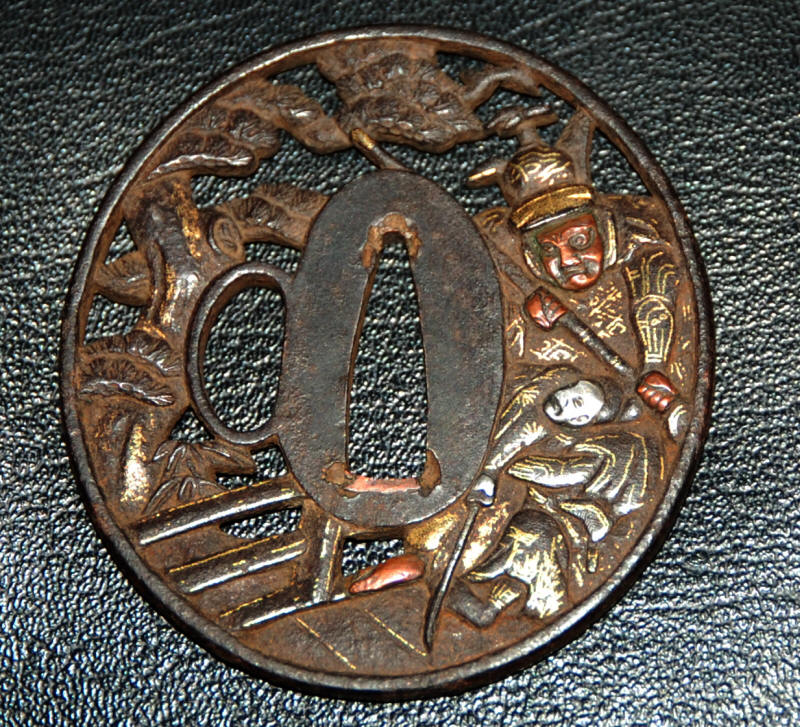Soten Style Mounted Wakizashi
KK0430
SOLD
A wakizashi in early handachi koshirae, mid Edo. The once gold leafed saya has lost much of the gilt from years of wear.
The tsuba is Kyoto work showing Yoshitsune and Bonenkai on the goju bridge, in the style of Soten. Details are good, no damage to the faces. Shakudo, copper and silver zogan, gold nunome. The shakudo, nanako fuchi-kashira, and the war fan menuki are Hiragiya work. It is unfortunate that the kozuka and kogai are missing, as I am sure that they too, would have been a matching set. The saya is handachi style, and all the fittings are blue black shakudo with lightly incised designs. The slender saya would indicate that is likely original to the sword.
The blade is a shinto wakizashi signed nijimei, Kunitsugu, which in all likelihood is either a gimei, or an attribution by the owner. Shingizukure, iroi mune, chukissaki. Hawatare: 1 shaku 7 sun 7 bu (63.657 cm / 21.125"). Motohaba: 2.62 cm. Sakihaba: 1.61 cm. Kasane: 5.3 mm. Gunome midare with choji in ko-nie, and shallow ashi iri, there is nijuba with gunome in the upper hamon. Bright habuchi, nado. The jigane itame with profuse small jinie and chikei. The boshi is komaru with a medium long kaeri. The blade is clean, but very old polish.
The Hiragiya moved from Kyoto to Hikone in Omi province. This family school very rarely signed their work which based on the style of later Soten. Generally their work is bolder, with larger figures, and with a greater use of gold, silver copper, and shakudo zogan than the later Soten artists. Ref. The Index of Japanese Sword Fittings and Associated Artists H 01291.0.

Soten Fuchi-Kashira
Soten Menuki
Indications of the original color of the saya before the gold leaf was so worn.